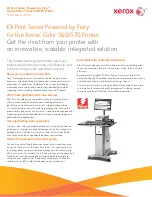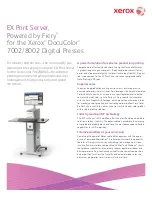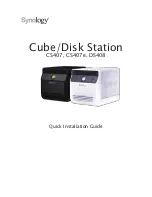
A.2 PS-4C AND PS-4E: EIA-422
INFORMATION
Please see
Appendix A.2.1
if using hardware handshaking or
Appendix A.2.2
if using XON/XOFF handshaking. If you are
unsure which type of handshaking you should utilize, use hardware
mode.
A.2.1
EIA-422 HARDWARE
HANDSHAKING
When connecting an EIA-422 device to the PS-4C or PS-4E using
hardware handshaking, the cable required to connect the two
devices must have TX+ wired to RX+, TX- wired to RX-, HSO+
wired to HSI+, and HSO- wired to HSI-. Please see
Figure 13
below.
PS-4C or PS-4E Equipment
(EIA-422) Connections
RJ-45
1
2
3 TX+ RX+
4 TX- RX-
5 HSI- HSO-
6 HSI+ HSO+
7
8
Figure 13
: EIA-422 Connection using Hardware Handshaking
If you are connecting a device which is not another BayTech
product, you must refer to the operator's manual for your
equipment to determine which pins are defined as TX+, TX-, HSO-,
and HSO+.
NOTE: If your EIA-422 printer or plotter has only one output
hardware handshake line (i.e., no HSO+ and HSO-), connect this
single handshake line to HSI- (Pin 3).
Summary of Contents for LASERSHARE PS-MIO
Page 100: ...94 ...
Page 101: ......
Page 114: ...108 APPENDIX E MECHANICAL LAYOUTS E 1 PS 4A PS 4C AND PS 4E ...
Page 115: ...E 2 PS MIO ...
Page 116: ...110 E 3 PS 4A SHIELDED TWISTED PAIR JUMPER LOCATION ...
Page 117: ...E 4 PS 4C SHIELDED TWISTED PAIR JUMPER LOCATION ...
Page 118: ...112 E 5 PS 4E SHIELDED TWISTED PAIR JUMPER LOCATION ...
Page 132: ... ...
Page 133: ... ...
















































